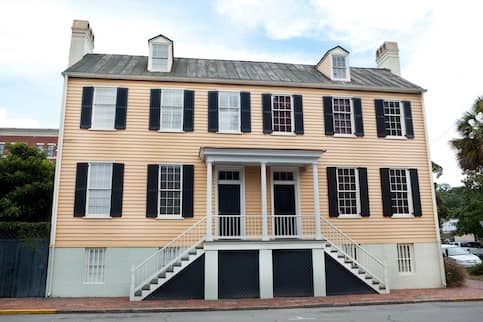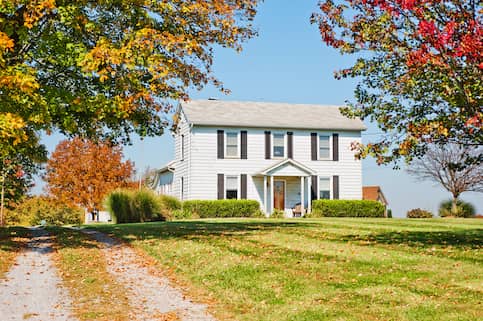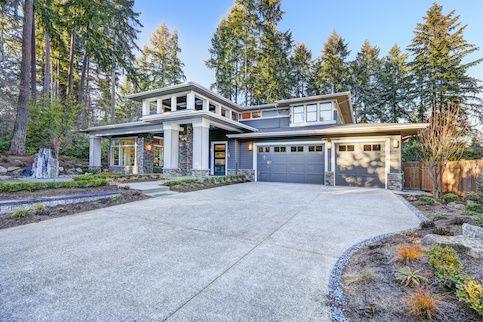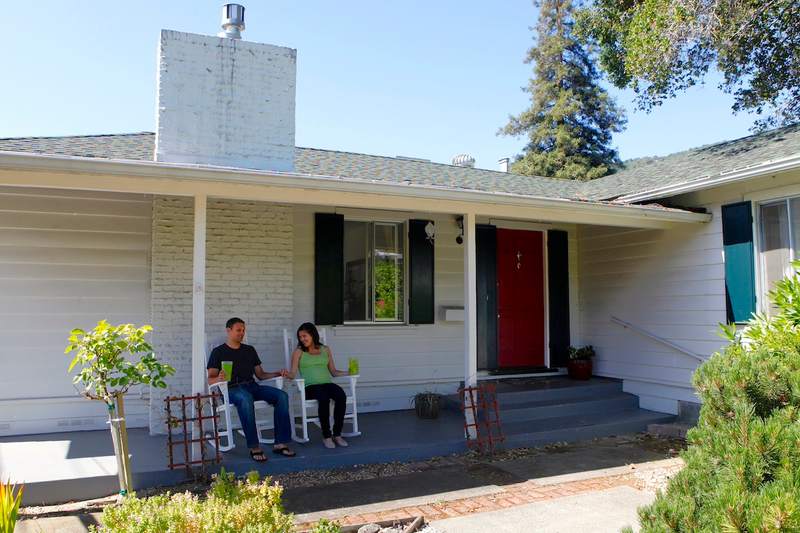Building equity is one of the advantages of owning a home, especially since you can borrow against your equity to pay for major expenses such as renovations, college tuition or home repairs. One of the most common ways to borrow equity is by taking out a home equity line of credit, or HELOC, which you can draw from as needed. Most HELOCs have a variable interest rate that adjusts to reflect market changes. But it is possible to take out a fixed-rate HELOC to protect yourself against rising interest rates. Here’s how a fixed-rate HELOC works and the pros and cons of getting one.
Key Takeaways:
- A home equity line of credit allows you to borrow money using the equity you’ve built in your home as collateral.
- Traditionally, HELOCs come with variable interest rates, but some lenders allow you to lock in your interest rate.
- A fixed-rate HELOC allows for predictable payments and can help you save on the interest you pay if rates rise.
How Does A Fixed-Rate HELOC Work?
A home equity line of credit lets you tap into your home equity and borrow up to a certain amount as needed. A fixed-rate HELOC comes with an interest rate that doesn’t change. Homeowners can use a fixed-rate HELOC to pay for home improvements, debt consolidation, education expenses, paying off credit cards or other reasons.
Traditional HELOCS typically come with a variable rather than a fixed interest rate, meaning your interest rate could change with the market if rates go up or down. A fixed-rate HELOC, on the other hand, offers borrowers the chance to lock in their interest rate. But it might come with higher fees to protect the lender if you can’t repay the loan.
If interest rates are low, locking in a rate can help homeowners minimize the interest they pay. Some lenders will let you convert your entire balance to a fixed rate. Other lenders will only let you convert a portion of your balance to a fixed rate, and you’ll pay off the rest with a variable rate.
A fixed-rate HELOC is also different than a home equity loan. While home equity loans also come with a fixed interest rate, you receive the money in one lump sum instead of having a revolving line of credit. With a HELOC, you only have to pay interest on the amount you use instead of the whole amount you’re eligible to borrow. In this way, fixed-rate HELOCs are a hybrid between a traditional HELOC and a home equity loan.
The terms of fixed-rate home equity lines of credit can vary – 30 years is common – but all are divided into a draw period and a repayment period.
Draw Period
The draw period – also known as the borrowing period – is the time that you have to borrow against your line of credit. This can typically be done using a charge card or special checks issued by your lender. Some lenders will require you to borrow a minimum amount each time you draw from your credit line. You may also need to borrow a minimum amount when your credit line is first made available to qualify for the fixed rate.
You can typically lock – or unlock – your interest rate at any time during the draw period. Lenders will also require you to make a minimum monthly payment during the draw period. If your interest rate is locked, these payments will be predictable. As you pay off your principal balance, your available credit line will increase, and you can keep using it. You might also be able to choose to make interest-only payments during the draw period, which lowers monthly payments in the short term but means you won’t be paying off any of the principal.
Repayment Period
After the draw period ends, you’ll enter the repayment period, during which your line of credit closes and you repay what you’ve borrowed with interest. Your lender will typically give you a schedule to repay the full amount over a specific amount of time – typically up to 20 years.
Some HELOC plans require you to repay the remainder all at once with a balloon payment if you haven’t paid off your entire balance by the end of the term. If you don’t have the cash available, you could refinance the balance with your lender or pay it off with a new loan. It’s important to understand that if you cannot pay off your HELOC according to the terms set by your lender, you could lose your home.
What’s Your Goal?
Buy A Home
Discover mortgage options that fit your unique financial needs.

Refinance
Refinance your mortgage to have more money for what matters.
Tap Into Equity
Use your home’s equity and unlock cash to achieve your goals.
How Do I Get A Fixed-Rate HELOC?
If you think a fixed-rate HELOC might be right for you, here are the steps you can take to get one:
1. Check Interest Rates
Average mortgage rates change daily and are largely impacted by the federal funds rate set by the Federal Open Market Committee, part of the Federal Reserve. Fixed-rate HELOCs make the most sense when mortgage rates are low or if they are forecasted to increase soon and you want to lock in a lower rate before that happens. On the other hand, if mortgage rates are projected to drop, you might be better off with a traditional HELOC with an interest rate that can adjust downward if mortgage rates do drop.
2. Understand Your Financial Needs
Consider what you’ll be using the money from your HELOC to accomplish. For example, if you’re planning home renovations but don’t know precisely how much they will cost, you can withdraw from a HELOC over time instead of getting a lump sum from a home equity loan. Budgeting how you will pay the HELOC back is also a good idea. If you need predictable monthly payments as you pay off the loan, a fixed-rate home equity line of credit might give you peace of mind, knowing your payments won’t vary.
3. Complete A Fixed-Rate HELOC Application
If you’ve decided that a fixed-rate HELOC is right for you, it’s time to fill out an application for the loan. Lenders will ask for information about your finances and home to determine your eligibility for the HELOC. Talk with your lender and ask if they offer a fixed-rate option. It’s also a good idea to shop around and get estimates from several lenders to compare costs and terms.
4. Advance Through Underwriting
Your lender will ask for specific documents and statements to verify your finances and determine whether to approve your loan. Lenders typically review your employment, income, assets, debts and credit history to determine if you can afford to repay the loan.
Some lenders waive the upfront costs, while others charge a fee to process your application and underwrite the loan. Your lender will likely order a home appraisal to determine the current value of your home, which can be an additional fee that’s included as part of your closing costs.
5. Get Approved For The HELOC Account
Once your lender approves your application, you move to closing. This is when you’ll sign the paperwork and pay any closing costs required. You’ll then get access to your line of credit and can borrow against it at any point during the draw period.
Ready To Become A Homeowner?
Get matched with a lender that can help you find the right mortgage.
Can I Convert My Variable-Rate HELOC To A Fixed-Rate HELOC?
If you already have a variable-rate HELOC and want to convert it to a fixed-rate HELOC, most lenders will let you lock or unlock your rate at any point during your draw period. If you’re already in the repayment period, though, or if your current lender doesn’t offer fixed-rate HELOCs, you have two options: Apply for a new, fixed-rate HELOC or refinance your variable-rate HELOC.
Opening a new, fixed-rate home equity line of credit will be a process similar to the one you experienced when you took out your initial, variable-rate HELOC. If you decide to get a new HELOC, it’s best to wait until the end of the draw period of your original one.
It’s also possible to refinance your variable-rate HELOC into a fixed-rate HELOC. With this option, your original HELOC would be paid off with money from a new, fixed-rate HELOC. However, not all lenders offer fixed-rate HELOCs, so you’ll need to speak to your lender to find out if a refinance would be an available option for you or otherwise find a different lender.
Take The First Step To Buying A Home
Find a lender that will work with your unique financial situation.
Can I Convert My Fixed-Rate HELOC To A Variable-Rate HELOC?
In some cases, converting your fixed-rate HELOC to one with a variable rate can make sense. For example, if interest rates drop during the draw period, some lenders will let borrowers switch from a fixed-rate to a variable-rate HELOC to take advantage of lower rates. Just beware that this option may also come with fees and limitations.
The Pros and Cons Of Fixed-Rate HELOCs
Like most loans, fixed-rate HELOCs come with both perks and downsides. Let’s look at some of the pros and cons of this loan type.
Pros
Some of the advantages of fixed-rate HELOCs include:
- Ensures stable repayment terms. With a fixed interest rate, you’ll benefit from stable, predictable monthly payments, making it easier to plan your budget. “A fixed-rate HELOC is good for a homeowner who wants the stability of a fixed payment each month, yet the flexibility of deciding how much and when to draw upon the extended line of credit,” says Kyle Enright, president of Achieve Loans in San Mateo, California.
- Offers protection against inflation. If economic inflation drives interest rates up, your HELOC interest rate won’t be affected.
- Good choice for consolidating debt. A HELOC typically carries a lower interest rate than credit cards because it’s backed by your home as collateral. By consolidating your debt with a HELOC, you’d save on the interest you have to pay.
- Interest may be tax deductible. If you use the money from a HELOC to improve the value of your home, the interest may be tax deductible. However, you cannot write off the interest if you use the money to pay off debt or for everyday living expenses.
Cons
It’s also important to be aware of the downsides of fixed-rate HELOCS, such as:
- Higher interest rates. Lenders often offer a temporary discounted interest rate on traditional, variable-rate HELOCs. That means fixed-rate home equity line of credit rates might be higher than the “teaser rate” on a variable-rate HELOC.
- Additional fees and penalties. Lenders can charge additional fees to lock in the interest rate on your HELOC. These can include an annual fee, an origination fee, rate lock fees, and penalties if you do not follow all of the terms.
- Minimum required borrowing amount. Your lender may also set a minimum amount you’ll need to borrow to get a fixed rate on your HELOC.
- Not all lenders offer them. Fixed-rate HELOCs are relatively new, so not all lenders offer this type of loan.
- Risk of foreclosure. A HELOC is a loan that uses your home as collateral. That means if you default, your lender can foreclose on your home.
Alternatives To A Fixed-Rate HELOC
A fixed-rate home equity line of credit isn’t the only way homeowners can get financing. Here’s a rundown of some of your other loan options:
Variable-Rate HELOC
A variable-rate HELOC has traditionally been the more common type of home equity line of credit. Instead of having a rate that’s locked in, your rate can change over the course of the repayment period based on the market. That means your monthly payments can also change, so you could potentially owe more each month as you repay the loan. Your lender might start you off with a lower introductory rate for a short period, but that rate will typically increase after as little as six months. However, if interest rates drop, so too can the interest rate on your variable-rate HELOC.
Home Equity Loan
Like a HELOC, a home equity loan allows you to borrow money using the equity you’ve built in your home. The difference with a home equity loan is that the money comes in one lump sum instead of a line of credit. Unlike a traditional variable-rate HELOC, home equity loans typically have a fixed interest rate. If you know exactly how much you need to borrow, want the money upfront, and prefer a fixed interest rate, you may want to see if you qualify for a home equity loan instead of a HELOC.
Personal Loan
A personal loan is an unsecured loan from a lender that does not use your home equity as collateral. As a result, you don’t risk losing your home if you default on the loan. However, because the loan is unsecured, you’ll typically have to pay a higher interest rate than you would with a HELOC. Personal loans don’t require closing costs and can be helpful for more minor, one-time expenses, though many borrowers use personal loans for home improvement.
Cash-Out Refinance
Another option for using your home equity to your advantage is a cash-out refinance, which allows homeowners to take out a larger mortgage than they currently have, replacing their existing mortgage and “cashing out” their equity. Once the refinance occurs, borrowers can pay off their original mortgage and pocket the difference, using the increased cash flow for needed expenses, such as home renovation or other debts. Of course, now they have a larger mortgage balance to pay off over time.
FAQ
Here are answers to some frequently asked questions about fixed-rate HELOCs.
Should I refinance my HELOC?
Switching your variable-rate HELOC to a fixed-rate HELOC may be worthwhile if interest rates are expected to increase. On the other hand, if you have a fixed-rate home equity line of credit, you may save money by converting to a variable-rate HELOC if interest rates are set to drop lower than the current rate you’re paying. If you’re still in the draw period, making this change should be relatively easy. Just keep in mind that not all lenders offer the fixed-rate HELOC option, so you could need to refinance with a different lender.
Can I pay off my fixed-rate HELOC early?
Paying off your fixed-rate HELOC ahead of schedule can help you save on interest overall. However, some lenders charge prepayment penalties. Be sure to check with your lender to review the terms of your loan when it comes to paying it off early.
What happens if I need to sell my house?
If you decide to move after you’ve taken a home equity line of credit, you’ll need to pay off the outstanding balance on the loan in full before you get any profits from selling your home.
The Bottom Line
Fixed-rate HELOCs make the most sense when interest rates are rising. While you may be paying a higher interest rate than you would during the introductory period of a variable-rate HELOC, you’ll be able to enjoy stable and predictable monthly payments. If interest rates drop, you may be able to switch to a variable-rate HELOC. However, not all lenders offer fixed-rate HELOCs. It’s crucial to remember that if you can’t repay the loan, you could risk losing your home.
More From Quicken Loans:
- HELOC Vs. Home Equity Loan: How To Choose
- How To Calculate Home Equity: A Step-By-Step Guide
- How To Get Equity Out Of Your Home: What’s The Best Time To Use Your Equity?
- Cash-Out Refinance Vs. HELOC: The Pros And Cons
- Home Equity Loan Alternatives: A Complete Guide
- Getting A Home Equity Loan With Bad Credit

Rory Arnold
Rory Arnold is a Los Angeles-based writer who has contributed to a variety of publications, including Quicken Loans, LowerMyBills, Ranker, Earth.com and JerseyDigs. He has also been quoted in The Atlantic. Rory received his Bachelor of Science in Media, Culture and Communication from New York University. He also completed the SoFi/Coursera Fundamentals of Personal Finance Specialization consisting of five courses: Introduction to Personal Finance, Saving Money for the Future, Managing Debt, Fundamentals of Investing, and Risk Management in Personal Finance.












